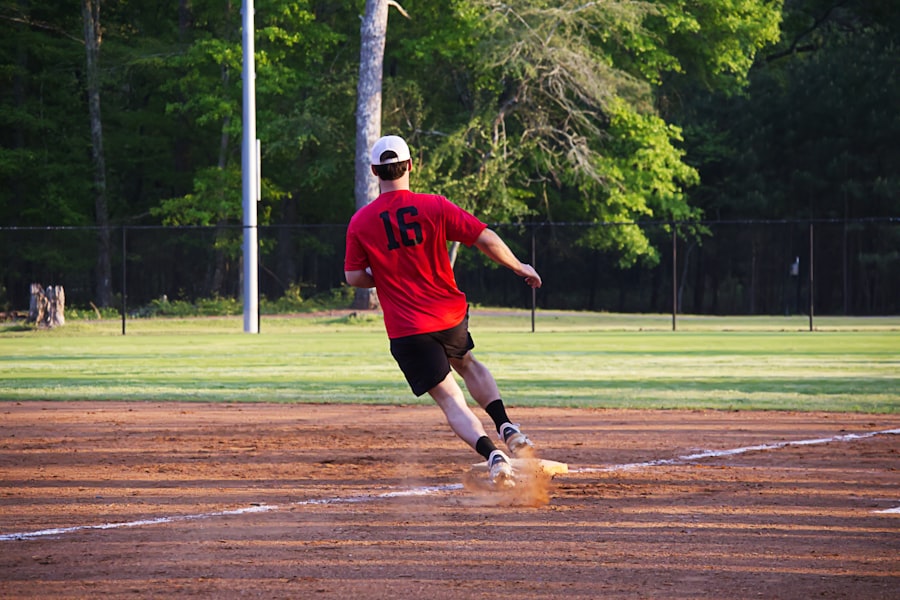Mastering the Art of Softball: Tips for Success
Description
Softball, a sport that has captivated millions around the globe, is often seen as a variant of baseball, yet it possesses unique characteristics that set it apart. The game is played on a diamond-shaped field, featuring four bases arranged in a square. The objective is straightforward: teams take turns batting and fielding, with the batting team aiming to score runs by hitting the ball and running around the bases.
The game is typically played with a larger ball than that used in baseball, and the pitching style is underhand, which significantly influences the dynamics of play. Understanding these fundamental aspects is crucial for anyone looking to engage with the sport, whether as a player, coach, or fan. The rules of softball can vary depending on the league and level of play, but the core principles remain consistent.
A standard game consists of seven innings, with each team having the opportunity to bat and field in each inning. The team with the most runs at the end of the game is declared the winner. Softball can be played in various formats, including fast-pitch and slow-pitch, each requiring different skills and strategies.
Fast-pitch softball emphasizes speed and precision, while slow-pitch focuses more on power hitting and strategic base running. Familiarity with these variations allows players to adapt their skills to different playing conditions and styles.
Key Takeaways
- Softball is a team sport similar to baseball, with a few key differences in rules and equipment.
- Proper technique and form are essential for success in softball, including correct throwing, catching, and hitting mechanics.
- Physical fitness and strength training are crucial for softball players to improve their speed, agility, and power.
- Mental focus and strategic thinking are important for making quick decisions and outsmarting opponents on the field.
- Defensive skills such as fielding, throwing, and positioning are key for preventing runs and supporting the pitcher.
Developing Proper Technique and Form
Mastering the fundamentals of softball requires a strong emphasis on technique and form. Whether it’s batting, pitching, or fielding, each skill demands specific movements that can significantly impact performance. For instance, when batting, players must adopt a balanced stance with their feet shoulder-width apart, knees slightly bent, and weight distributed evenly.
This position not only provides stability but also allows for a powerful swing. The grip on the bat is equally important; players should hold it firmly but not too tightly to maintain flexibility in their wrists during the swing. Pitching in softball is an art that combines mechanics with finesse.
The underhand delivery requires pitchers to generate speed and spin while maintaining control over the ball’s trajectory. A proper windup involves a smooth motion that begins with the pitcher’s pivot foot and culminates in a powerful release. Key elements include keeping the elbow below the shoulder during the throw and following through to ensure accuracy.
Practicing these techniques repetitively helps players develop muscle memory, which is essential for consistent performance during games.
Improving Physical Fitness and Strength

Physical fitness plays a pivotal role in a softball player’s overall performance. The sport demands a combination of endurance, strength, agility, and flexibility. Players must be able to sprint between bases, dive for ground balls, and maintain their energy levels throughout the game.
A well-rounded fitness regimen tailored to these needs can significantly enhance a player’s capabilities on the field. Cardiovascular exercises such as running or cycling improve stamina, while strength training focuses on building muscle groups essential for throwing power and batting strength.
Exercises like ladder drills or cone sprints enhance foot speed and coordination, allowing players to react quickly during gameplay. Flexibility training through stretching or yoga can prevent injuries and improve range of motion, which is crucial for executing various skills effectively.
By prioritizing physical fitness, players not only enhance their performance but also reduce the risk of injuries that could sideline them during critical moments of the season.
Enhancing Mental Focus and Strategy
| Metrics | Results |
|---|---|
| Number of hours spent on focused activities | 20 hours per week |
| Success rate in completing strategic tasks | 85% |
| Improvement in problem-solving skills | 25% increase |
| Reduction in distractions during work | 40% decrease |
Softball is as much a mental game as it is a physical one. Players must develop mental toughness to handle pressure situations, make quick decisions, and maintain focus throughout the game. Visualization techniques can be particularly effective; players often imagine themselves successfully executing plays or hitting home runs before stepping onto the field.
This mental rehearsal builds confidence and prepares them for real-game scenarios. Strategic thinking is another vital component of success in softball. Players must understand game situations—such as when to steal a base or how to position themselves defensively based on the batter’s tendencies.
Coaches often emphasize situational awareness during practice sessions, encouraging players to think critically about their roles within the team framework. By fostering an environment where players are encouraged to discuss strategies and share insights, teams can develop a collective understanding that enhances overall performance.
Mastering Defensive Skills
Defensive skills are crucial in softball, as they can often determine the outcome of a game. Fielders must be adept at catching fly balls, fielding grounders, and making accurate throws to bases. Each position on the field has its own set of responsibilities; for example, outfielders need to cover large areas and track fly balls while infielders must react quickly to ground balls and make split-second decisions about where to throw the ball.
Practicing defensive drills is essential for honing these skills. Drills such as “cut-off plays” help players learn how to communicate effectively while executing plays that involve multiple fielders. Additionally, situational drills that simulate game scenarios allow players to practice their decision-making skills under pressure.
Perfecting Offensive Techniques

Offensive techniques in softball encompass a range of skills from hitting to base running. Batting is often considered one of the most exciting aspects of the game; thus, players must focus on refining their swing mechanics to maximize their hitting potential. This includes understanding pitch types—such as fastballs, curves, and change-ups—and adjusting their approach accordingly.
Batters should also work on their timing; recognizing when to initiate their swing can make all the difference between a hit and a strikeout. Base running is another critical offensive skill that requires speed and strategic thinking. Players must know when to take risks—such as attempting to steal a base or advancing on a hit—and when to play it safe.
Coaches often emphasize the importance of reading the defense; understanding how fielders are positioned can provide valuable insights into whether a player should attempt to advance or hold their position. By mastering these offensive techniques, players can significantly contribute to their team’s scoring potential.
Building Teamwork and Communication
Softball is inherently a team sport that thrives on collaboration and communication among players. Effective teamwork can elevate individual performances and create a cohesive unit capable of executing complex plays seamlessly. Building strong relationships among teammates fosters trust and encourages open communication on the field.
Players should engage in team-building activities both on and off the field to strengthen these bonds. Communication during games is vital for success; players must call out plays, signal intentions, and provide feedback to one another in real-time. Infielders often use verbal cues to alert teammates about potential plays or incoming balls, while outfielders need to communicate their positioning relative to infielders during pop-ups or line drives.
Establishing clear communication protocols can minimize confusion and enhance overall team performance.
Utilizing Resources for Continued Improvement
In today’s digital age, numerous resources are available for softball players seeking to improve their skills continuously. Online platforms offer instructional videos that cover everything from basic techniques to advanced strategies, allowing players to learn at their own pace. Additionally, many organizations provide access to coaching clinics where players can receive hands-on instruction from experienced coaches.
Books written by softball experts can also serve as valuable resources for players looking to deepen their understanding of the game’s intricacies. These texts often cover topics such as mental preparation, advanced techniques, and strategies for success at various levels of play. Furthermore, engaging with local leagues or joining travel teams can provide practical experience that complements theoretical knowledge gained from other resources.
By actively seeking out these opportunities for growth, players can ensure they remain competitive and continue to develop their skills throughout their softball journey.
If you’re a fan of softball, you may also be interested in learning about the latest photo editing apps to enhance your game day pictures. Check out this article on Pic Collage Editor de Fotos for some tips and tricks on how to make your softball memories even more memorable.
FAQs
What is softball?
Softball is a bat-and-ball sport that is similar to baseball. It is played on a smaller field and with a larger ball.
How is softball played?
Softball is played between two teams of nine players each. The game consists of innings, with each team taking turns to bat and field.
What are the basic rules of softball?
The basic rules of softball include pitching the ball underhand, hitting the ball with a bat, running the bases, and fielding to get the opposing players out.
What equipment is used in softball?
The equipment used in softball includes a bat, a ball, gloves for fielding, helmets for batting, and protective gear for the catcher.
What are the different types of softball?
There are two main types of softball: fastpitch and slowpitch. Fastpitch softball is played with a larger ball and faster pitching, while slowpitch softball is played with a smaller ball and slower pitching.
What are the health benefits of playing softball?
Playing softball can help improve cardiovascular health, strength, agility, and hand-eye coordination. It also promotes teamwork and social interaction.





